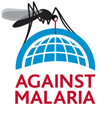A Future for Himalayan Children
Note from Georgia:
Nepal is the poorest country in Asia. The average annual income is around $200 US. (That's annual!)
These children are Tibetan refugees from the mountain regions. 71% of the children must work to eat. The mortality rate of newborn babies is the highest in the world. 28,000 children under the age of five die every year from diarrhea. Fewer than 15% of Nepali females can read or write.
Your donations cover food costs (500 hot meals every day), clothing, teacher salaries, fuel and electricity, and medical and transportation costs.
The information below was sent by the school.
For More Information
- Find out how to make a donation or sponsor a child
- Read stories and bios of some of the children
- See photos of the school
Shree Mangal Dvip Schools
A Tibetan lama called Thrangu Rinpoche established Shree Mangal Dvip Schools to meet the needs of children from the mountainous borderlands in the North of Nepal. Although some of our students are refugees from Tibet, most were born in the Himalayan mountains of Nepal.
The villages are remote and at very high altitude. There are no roads. The average trek to the nearest road is a week. Himalayan villages have no electricity, no telecommunication, no running water, no sanitation, and no health care. There are no schools.
Himalayan people are semi-nomadic herders/subsistence farmers. At these altitudes, it is only possible to grow potatoes and barley. Mountain folk rarely get enough to eat: all Himalayan children suffer from serious malnutrition. Under these conditions, most mountain children over the age of 5 must work simply to ensure the family's survival.
When Children First Come to SMD
We have been besieged with requests. There are more than 200 children waiting but we have no more room.
When the children first come to us, they are in poor condition from malnutrition. Their growth is stunted, many are suffering from pellagra, and TB. All have parasites. They have never had enough to eat, so when they first arrive, they eat like wolves: we have to watch them so they don't make themselves sick. It takes some of them a few months to understand that they won't go hungry at SMD.
Humanitarian Crisis
For the past seven years Maoist rebels have been trying to topple a series of corrupt and inept governments. The country is convulsed by civil war. Villagers find themselves trapped by the fighting. Unable to farm or herd, they are accused of complicity by both sides and victimized by both.
The humanitarian crisis brought on by neglect and civil war has had an enormous impact on our school: from 2000 onwards, we forced to admit children on the basis of life or death, taking only those we feared would not survive another year in the mountains. We became terribly overcrowded. Thrangu Rinpoche opened the Branch School for Little Monks, to take the pressure off our classrooms. The little monks at the Branch School follow the same course of studies as the kids at our main school, and they also learn Buddhist rituals.
A Brighter Future
Mongolian in origin, Himalayan people are an ethnic minority in Nepal. Unlike the lowlanders of Nepal, they speak Tibetan and their thinking is Buddhist.
Nepal is the poorest country in Asia: it has no infrastructure and offers no services to people outside the Kathmandu valley. Dominated by corruption and caste, Nepal has lacked the will to educate the majority of her citizens, let alone a distant minority. Himalayan people are unable to educate their children. The world is unaware of their plight.
Thrangu Rinpoche's schools are unique; they are the only schools that meet the needs of people from the spine of the Himalayas. The schools offer a full education following the Nepali government curriculum, enriched by instruction in Tibetan language and culture. The children learn the music and dance of the Himalayas. Instruction is given in English. Most children have achieved some fluency in all three languages (Tibetan, Nepali and English) by the time they are eight years old. As a Buddhist school, instruction is given in the teachings of the Buddha and the children take part in prayers every day.




